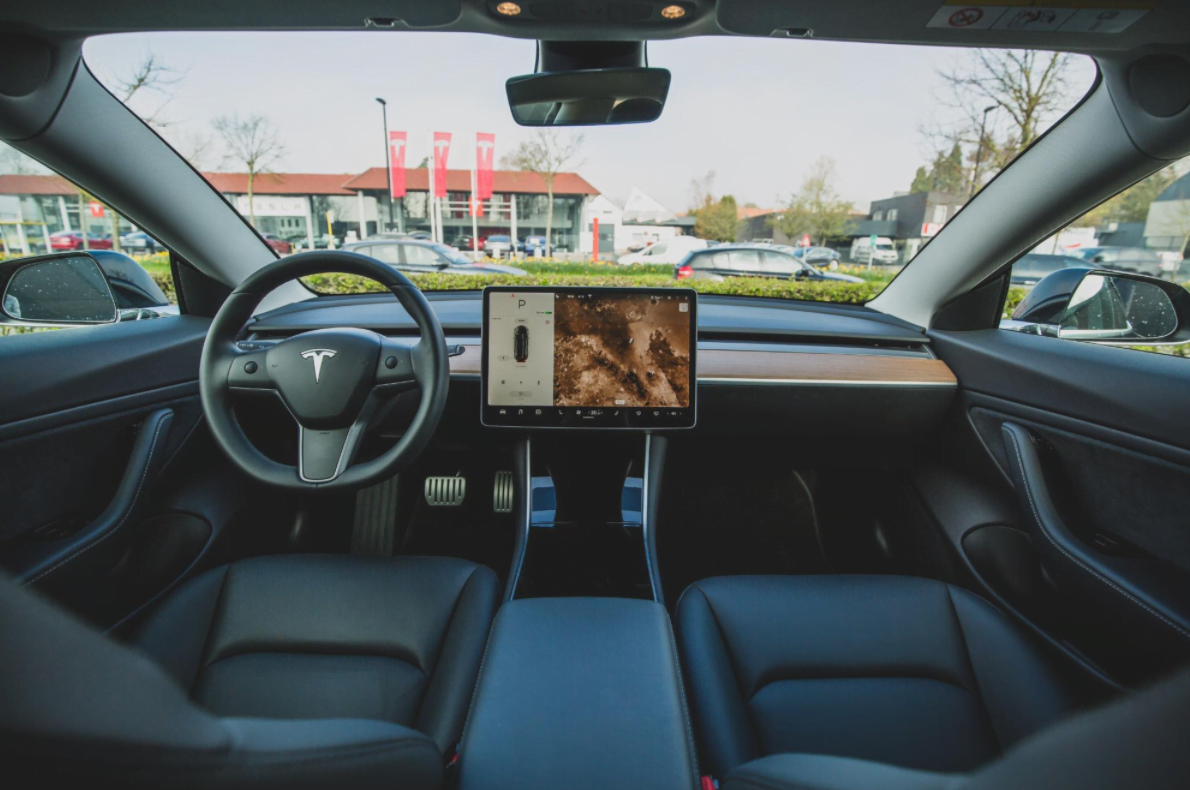When it comes to convenience and providing freedom, the automobile is one of the most important inventions ever made. This is especially true for people in countries with large expanses, like the U.S., that practically demands to be driven over. We didn’t see a great number of changes in the general design, however, until the past 25 years or so. Now, automakers provide cars with Bluetooth connectivity, keyless ignition, electric engines for environmental safety, and much more. The autonomous vehicle (AV) has even been a goal for many automakers and dreamers as far back as the 1930s. Today, the self-driving car is a reality, and it’s closer to becoming commonplace than you may think.
Thanks to technological advancements in artificial intelligence, 3D imaging, LIDAR, and Internet of Things (IoT) sensors, driverless cars have taken to public roads for the first time in a variety of experiments, and they’ve even made it into the hands of human drivers. Of course, these autonomous cars offer much more than greater personal convenience (who wouldn’t love to be able to get some work done as your futuristic car chauffeurs you around?). They’ll change the way the automotive industry makes cars, and they’re bound to have a tremendous impact on the transportation industry. In fact, one of the greatest fears surrounding autonomous vehicles is that they’ll put human drivers in the transportation industry out of work.
Such concerns are a bit premature, however. Regulations regarding these vehicles are still up in the air, but it’s quite possible that autonomous trucks used in shipping and other passenger jobs would require a human driver to be seated in the driver’s seat and to actively maintain speeds using adaptive cruise control while also taking periodic control of the steering wheel. Such regulations have already been proposed, but concerns about producing barriers to autonomous technology have kept them from being a sure thing.
No matter how anyone feels about autopilot cars, test vehicles have been on the road for the last decade, and car companies are working extremely hard to make these builds an everyday reality. Here are some of the main self-driving car companies that are worth watching as innovators continue to push the technology in the United States and beyond.
Tesla

Tesla, Inc. is an electric vehicle and clean energy company based in Palo Alto, California. The current CEO, Elon Musk, has been a long-time supporter of driverless cars, arguably to a fault. In June, he admitted that he underestimated the difficulty of designing a completely safe and reliable self-driven car. This comes after disappointments last year, and in previous years, about the pace of development for full self-driving technology (which would still require regular input from a human driver). Still, this hasn’t stopped fans from adolescence and well into adulthood from believing in Tesla and an autonomous driving system with automatic startup, brakes, driver-facing cameras, and more.
It remains to be seen if Tesla can truly live up to the ambitious promises that have been made regarding its robot car technology, but it’s certainly a company worth keeping up with, if only for the fact that it’s encouraged the public to accept the idea of autonomous vehicles and has even built hype around the search for the best self-driving car.
Waymo

Formerly known as the Google self-driving car project, Waymo currently runs a self-driving taxi service in Phoenix, Arizona, and has Chandler, Arizona fully mapped. Their goal is to make it safer and easier for everyone in North America and beyond to get around without the need for anyone in the driver’s seat. Google has always been a leader in machine learning, computer algorithms, and AI advancements, and with the Waymo Driver, they’re looking to create an unmatched autonomous driving experience with a fully automated vehicle.
The tech company has been working on this project in some form since 2009, and they currently boast “the most experienced driver in the world.” Waymo has been tested in over 10 states, and it’s driven literally billions of miles in simulations. The use of photo-realistic simulations is becoming a common method for testing autonomous car technology, and it helps cars learn to navigate streets in difficult scenarios with infinite steering possibilities. These simulations go far beyond the video games that high school students and young adults often play with NVIDIA and other GPU support. These simulations test cars on real-world streets and replicate everything from realistic acceleration and motion to a variety of worst-case scenarios. Ultimately, the goal is to create a car company that can eliminate the frustrations normally associated with driving.
Waymo has also tested with multiple classes of vehicles to make sure their driver is safe with anything. Waymo One is the robotaxi service that moves people, but the technology company also has such systems active in Waymo Via for transporting goods. Waymo technology has been applied to vehicles as difficult as Class 8 tractor-trailer trucks, including safe automatic braking, lane keeps assist, and other safety features. Dynamic motion sensors give Waymo’s self-driving tech a better sense of control compared to other technologies, and it’s one of the best examples of an autonomous car project that ranks high in the present day.
Aurora Technologies
The ride-hailing service Uber was working on similar systems for self-driving features, but it recently sold its autonomous ride subsidiary to the startup Aurora Technologies, despite claiming that it was a significant part of Uber’s future. The relatively new company, Aurora, has stated in the past year that it seeks to build the next generation of self-driving cars and make them a reality in the near future. They’ve formed partnerships with big names in the automotive industry, including Paccar and Volvo, to make the dream a reality.
They seek to transform mobility with their new technology in ways that will promote safety, improve access to transportation (such as helping people with disabilities drive with assistance systems), and help small businesses by making driving tasks like moving goods safer. We’ll see if their collaborations bear fruit when their first commercial product is revealed.
BMW

This luxury vehicle company isn’t just talking about autonomous driving in theory—its new model year cars all support at least level one automation, and some even support level two. There are basically five levels of autonomous driving, with level one being driver assistance. This is the technology that assists drivers without taking full control. Examples of an advanced driver assistance system could be warnings that display when another vehicle is in your blind spot or built-in GPS systems that load map data. This level of technology also covers automatic braking systems that prevent collisions and traffic jams, as well as adaptive cruise control, which can automatically adjust your speed based on distance from the leading vehicle.
Level two is referred to as partially automated driving. This includes things like lane control systems and automatic acceleration and braking, and these systems can even take control of steering in certain situations, such as if you’re about to hit a pedestrian. It’s important to keep in mind, though, that level two automation for BMW vehicles still requires a human in the driver’s seat, and you’ll still need to pay full attention to the road.
General Motors
GM has been speaking out about its commitment to the future in recent years, including its intention to support an all-electric future. This includes their plans for autonomous vehicles, all of which will be electric. They’re dedicated to pushing safety technology more than ever before in order to eliminate car crashes by eliminating the human error that’s responsible for well over 90 percent of them.
While they’re not ready to present a commercial product as yet, their test vehicles are taking to the freeways and dense urban environments under the guidance of human drivers known as Autonomous Vehicle Trainers, who remain in the driver’s seat. The previous test runs from other manufacturers of new cars with lane-keeping assist systems, supercruise, and autonomous capabilities have been run out of Silicon Valley in cities like San Francisco and Los Angeles, so it will be interesting to see how these tests improve vehicles under human intervention.
Apple

It’s impossible to complete a technology list without returning to the top of the alphabet with Apple. It’s no secret that Project Titan is another name for Apple’s electric car project, and it’s now suspected that Project Titan has evolved into an autonomous car project. There’s only a little bit of certain information for now, but the project has received a permit for autonomous car testing, and it seems that hundreds of employees are working on a self-driving car project aimed at Apple consumers. While deep integrations with iOS are expected, there’s no way to confirm as of now. The tech company is known for taking new technology further than anyone else, and it’s expected that their car will be a high-end model.
Naturally, these aren’t the only manufacturers and brands working on autonomous cars and other advanced driving technology. Carmakers like Honda, Toyota, Audi, Cadillac, Hyundai, Volkswagen, Kia, Nissan, Mercedes-Benz, and the rest are all looking to take advantage of new technology and impress consumers with newer, better products. Lyft is even partnering with the world’s leading self-driving car brands to provide a completely automated ride-hailing service.
Safety has to be the biggest concern with these technologies, both to prevent collisions and jams and to ensure pedestrians and cyclists will remain unharmed. The U.S. Department of Transportation is committed to ensuring that autonomous vehicles can become a safe and reliable part of our daily lives and works with its collaborators to ensure this reality. Cybersecurity will also need to be a top concern before the widespread adoption of truly autonomous cars as support continues to rise.





